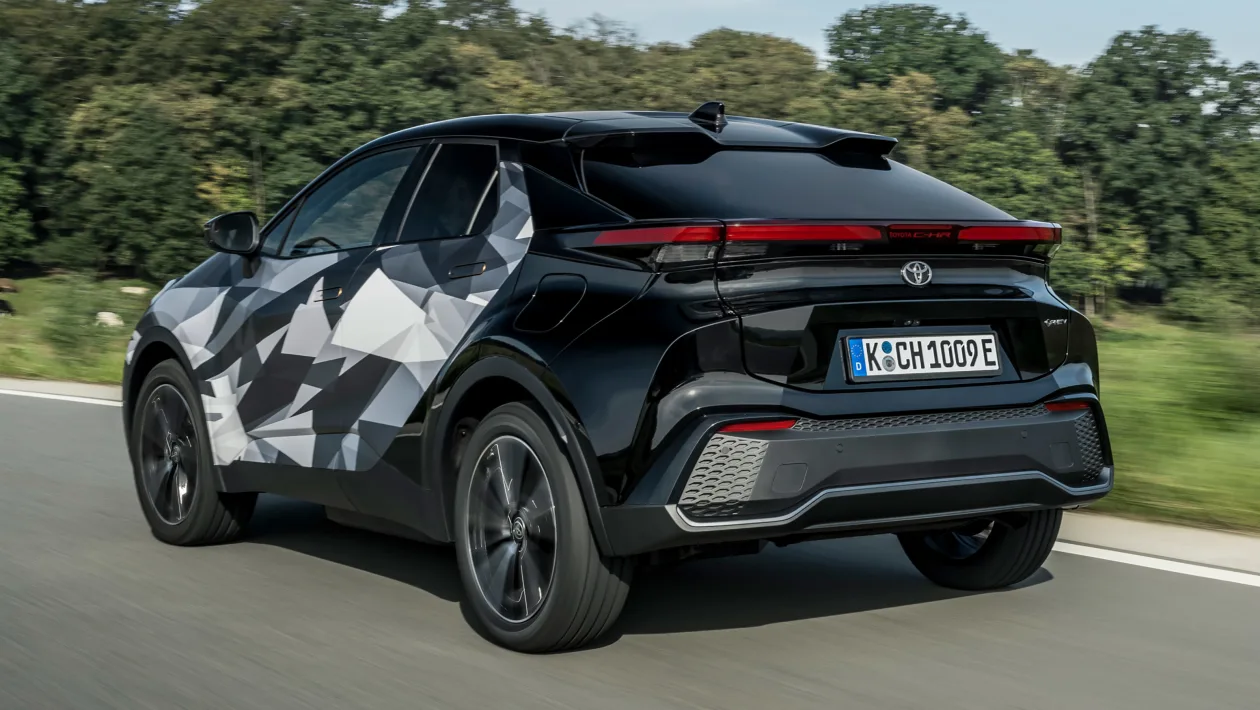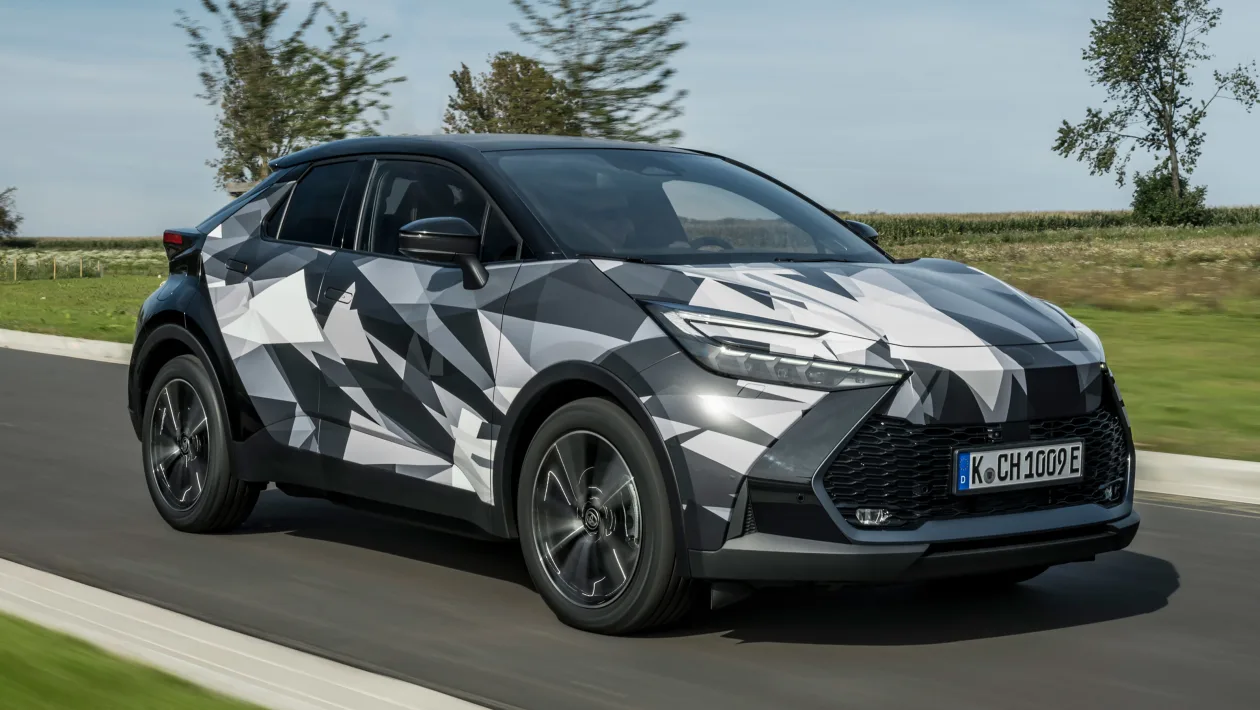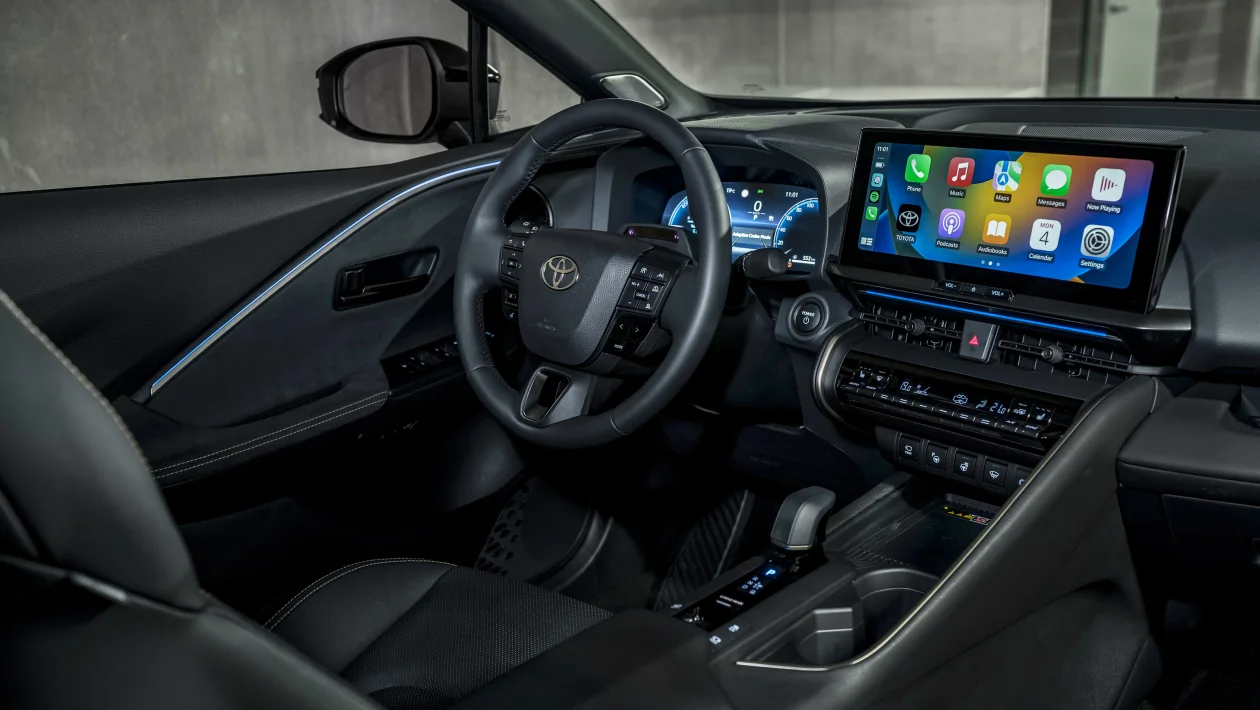Second-generation version of Toyota’s crossover smash hit gains sharper styling and will be hybrid only.
The Toyota C-HR’s mix of sharp styling with coupe-crossover shape helped it to find a genuinely rare space at the small end of the C-SUV market (think Volkswagen T-Roc and Hyundai Kona) and stood far apart from Toyota’s previously stodgy designs, attracting buyers who wanted a bit of edge to their high-riding family runabout.
So Toyota has doubled down on its approach with this second-generation C-HR. Chief engineer Toshio Kanei led development from Toyota’s Belgian technical centre and much of the styling work was done by the firm’s ED2 design studio in Nice, France.
Toyota’s customer research suggested the original’s edgy styling was key to its conquest rate, and Kanei says that the goal with the new C-HR was to push that even further and make a “show car for the road”.
This C-HR makes the old one, rightly lauded for its dramatic styling, look positively bland. There are dramatic lines, bodywork creases so sharp they look like they could cut you and dramatically sculpted headlights. The front has been reworked with Toyota’s new ‘hammerhead’ face, first seen on the lovely new Toyota Prius we don’t get over here. Certain trim levels will get a stylish two-tone paint scheme, too.
Notably, the bumpers and some other body elements are made of a new pre-coloured resin, so they don’t need to be painted, which substantially reduces the amount of CO2 emitted during production. It also affords a cool two-tone appearance.
Highly unusually, the new C-HR is actually smaller than its predecessor. Toyota has trimmed 35mm from its length and 15mm from its height. But before you rejoice too much at a bucking of the trend for ever-growing cars, know that it’s also 45mm wider. It has bigger wheels too: up to 20-inch.
While it’s wider than the old version with a bigger frontal area thanks to the bigger wheels, the new C-HR is around two per cent more aerodynamically efficient than its predecessor.
The claim is that the wider track is better for handling, and because the C-HR maintains a 2640mm wheelbase, it has about the same amount of room for passengers.
If you’re an adult who might spend a significant amount of time in the back of a C-HR, that could set some warning lights flashing: as before, rear leg room is far from the best and that sloping roofline cuts into the head room.
Still, that didn’t exactly put off buyers before. Besides, Toyota now offers the slightly larger Corolla Cross for those who want to trade some style for some space.
Engineers have also made efforts to improve the feeling of space in the back: there’s a new tinted panoramic roof that doesn’t need a shade (adding 30mm of head room) and new window cut-outs in the C-pillar are designed to improve the views out.
On the subject of those C-pillars, you’ll no longer find the rear door handles hidden in them. Following feedback from customers they’re now in a far more traditional position on the rear doors, although all the handles now sit flush to the bodywork and pop out when you push them in.
The boot remains on the small side, mind you – although Toyota has yet to give a capacity, or how much of it is lost in the PHEV version due to various electric gubbins underneath the floor.
In the front of the cabin, Toyota set out to improve the perceived quality, and it definitely feels a step up from the original C-HR. There’s a new 12.3-inch digital dial display and a new touchscreen (8.0-inch as standard or 12.3-inch on pricier models, like ours) running Toyota’s latest infotainment system, while enough physical controls remain for the key functions to keep most people happy.
The driver’s seating position is quite high, as you would expect in a crossover, and visibility is good all round. The various grades of seats all feature recycled materials, and those in our test car were certainly comfortable enough.
Another part of the development team’s focus was on improving the new C-HR’s dynamics. Toyota’s TNGA-C platform, also used by the Toyota Corolla hatchback, is a strong base, but there are some notable changes from the first version. While the suspension retains MacPherson struts up front and a multi-link set-up at the rear, both are reworked and tuned, the latter with elements from the set-ups of the Camry sedan and RAV4 SUV.
There’s also a new powertrain choice, the 1.8-litre and 2.0-litre hybrid systems from the original C-HR being joined by a 2.0-litre plug-in hybrid one, as in our test car. Unfortunately, this one won’t be available in Australia anytime soon, so its performance is representative of the normal mild hybrid motors.
The work Toyota that has done on the ride is notable, whether you’re in tight urban areas or on fast and flowing roads. It’s comfortable and well balanced, and remains poised on bumpy surfaces while also feeling stable at higher speeds.
It’s agreeable rather than truly dynamic (after all, it’s still a crossover), but it can certainly put a smile on your face.
Toyota has yet to set pricing, but we’re expecting the hybrid-only model range in Australia to ask a premium over the out-going line-up.
Despite the camouflage wrap on our test car, it was representative of production examples, and while we haven’t tried the regular hybrid yet, it’s already clear Toyota’s vision for the C-HR has paid off, having taken a winning formula and improved it in most areas.









